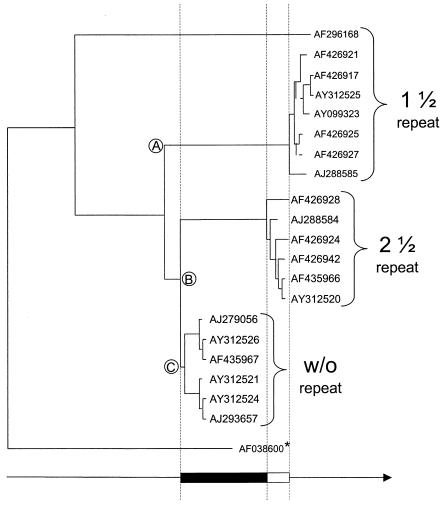FIG. 3.
Phylogenetic tree of PERV-A envelope protein sequences aligned for evolutionary time, calculated as in Table 2. Env sequences were shortened to amino acid position 654 to avoid any bias due to R-peptide variations or truncation (see the text and Fig. 1C and D for details). The analyzed PERV-A Env sequences cluster into three groups, with their branching points indicated by letters. The most divergent group (A) is the oldest one, the second group (B) being only slightly younger. This behavior correlates with LTR types with 1 1/2 and 2 1/2 repeats, respectively. The less-divergent group (C) is the youngest one, with all members belonging to proviruses with repeatless LTRs. The distance between cluster A and B is approximately one-fourth of the distance between cluster C and cluster A. When assuming a difference of approximately 0.9 million years between LTRs with 1 1/2 and 2 1/2 repeats (white box) (see Table 2), these two groups are about 3.5 millions years older than groups C (black box) (compare table 2). *, PERV-C (1) was chosen as the outgroup because of its close relationship to PERV-A sequences. The arrow indicates increasing divergence and therefore increasing evolutionary age. Please note that no absolute age is indicated, since an external reference is missing (see the text), and that only relative age can be determined from the graph.

